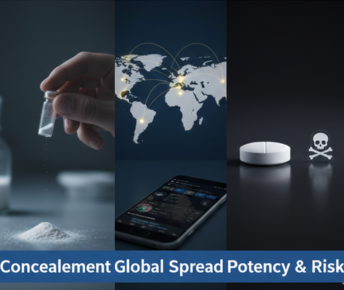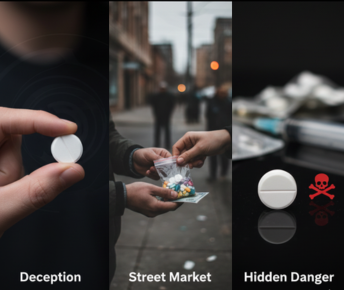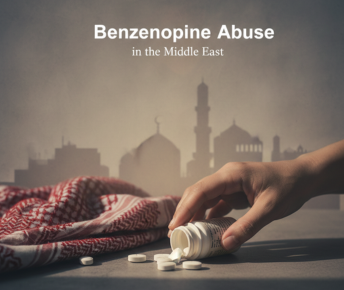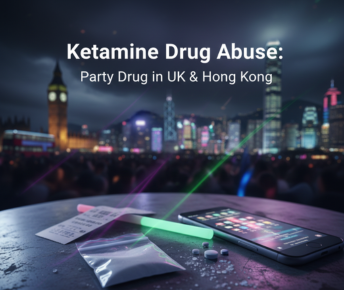Introduction
The allure of substances can be particularly potent during adolescence, a time of exploration, vulnerability, and intense peer influence.
Among these substances, Methamphetamine poses a significant threat due to its highly addictive nature and devastating consequences, especially for developing minds and bodies.
Recognizing Meth addiction in teens early on is crucial, as timely intervention can drastically alter the trajectory of their lives.
This blog aims to provide an insightful and granular understanding of Meth addiction in adolescents, exploring the concerning signs of meth use, potential underlying causes of addiction, the profound effects of methamphetamine abuse, and the vital pathways to effective help and recovery.
For parents, educators, and young people themselves, understanding the gravity of Meth abuse and the availability of substance abuse treatment is the first step towards breaking free from its grip.
Also Read: What Is Substance Abuse? Signs, Symptoms, and Causes
What are the Symptoms to Look For?
Identifying Methamphetamine-induced symptoms and the broader signs of meth use in teenagers can be challenging as some changes might be dismissed as typical adolescent behavior.
However, a cluster of specific indicators should raise concern. These include significant and unexplained changes in energy levels (periods of hyperactivity followed by extreme fatigue), drastic weight loss and changes in appetite, dilated pupils, increased talkativeness or agitation, paranoia or suspiciousness, repetitive and compulsive behaviors (like skin picking), neglecting responsibilities at school or home, and withdrawal from previously enjoyed activities and friends.
Physical signs of meth use might also include track marks from injecting the drug, burns on fingers or lips (from smoking), and dental problems ("meth mouth"). Recognizing these symptoms of Meth addiction early is vital for prompt intervention.
What are the Potential Causes of Addiction?
The causes of addiction, including Meth addiction, in teenagers are often multifaceted.
Genetic predispositions can increase vulnerability, while environmental factors play a significant role. Peer pressure and the desire to fit in can lead to experimentation. Underlying mental health issues like depression, anxiety, or ADHD may prompt some teens to use Meth as a form of self-medication.
Trauma, instability at home, and a lack of positive role models can also contribute to substance abuse. The intense euphoria produced by Meth can quickly lead to dependence, making it difficult for teens to stop using even when they recognize the negative consequences.
Understanding these potential causes of addiction is crucial for developing effective prevention and substance abuse treatment strategies.
Effects of Methamphetamine Abuse in Teens
The Effects of Methamphetamine abuse on the developing teenage brain and body are devastating.
Physically, Meth use can lead to severe cardiovascular problems, including rapid heart rate, high blood pressure, and increased risk of stroke. Neurological damage can result in cognitive impairments, memory loss, and difficulties with motor skills.
Psychologically, Methamphetamine-induced symptoms can include intense paranoia, hallucinations, delusions, aggression, and severe mood disturbances. Long-term meth abuse significantly increases the risk of developing psychosis and other serious mental health disorders.
Socially, addiction can lead to isolation, strained relationships with family and friends, academic failure, and involvement in risky behaviors. Recognizing the profound and lasting effects of Methamphetamine abuse underscores the urgency of seeking help.
Suggested Reading: Meth Relapse Prevention Tips
How Can It Be Helped?
Addressing Meth addiction in teens requires a comprehensive and multi-faceted approach. Early intervention is key.
Open and honest communication between parents and teenagers is crucial, focusing on expressing concern and offering support without judgment. Professional help is essential and often involves a combination of substance abuse treatment and behavioral therapy.
A behavioral therapist specializing in adolescent addiction can help teens understand the underlying issues contributing to their meth use, develop coping mechanisms, and build healthier life skills. Family therapy is also vital to address any family dynamics that may be contributing to the problem and to help rebuild trust and communication.
For more severe cases, a substance abuse rehabilitation center provides a structured and supportive environment for detoxification and intensive therapy.
If you know a teenager who struggles with Meth addiction, Samarpan Recovery, one of the best rehabs in India, offers evidence-based substance abuse treatment programs specifically designed for young people.
Warning Signs of Meth Usage
Beyond the overt symptoms of Meth addiction, subtle behavioral and environmental cues can signal potential meth use in teenagers. Be particularly alert to sudden and unexplained shifts in their circle of friends, increased secrecy about their activities and whereabouts, and a reluctance to introduce new acquaintances.
Unexplained disappearances for extended periods, especially at odd hours, can also be a red flag. The possession of unusual paraphernalia, such as glass pipes, small plastic bags containing white powder or crystal-like substances, Methamphetamine, burnt foil, or unusual chemical odors emanating from their room or belongings, should not be ignored.
Furthermore, a sudden increase in financial problems, unexplained requests for money, or instances of theft from family members could indicate a growing need to fund a Meth habit.
These signs of meth use, when observed in combination with other Methamphetamine-induced symptoms, warrant serious concern and the need for professional assessment and substance abuse treatment.
Conclusion
Meth Addiction is a serious threat to teenagers, but it is not a battle they have to fight alone. Recognizing the signs of meth use, understanding the potential causes of addiction, and acknowledging the devastating effects of Methamphetamine abuse are crucial first steps.
Effective help is available through specialized substance abuse treatment and behavioral therapy.
Samarpan Recovery, with its facility in Pune, offers compassionate and evidence-based substance abuse treatment programs tailored to the unique needs of adolescents struggling with Meth Addiction.
Our experienced team provides a safe and supportive environment for healing and recovery, guiding teens and their families towards a brighter future.
Early intervention and comprehensive support offer the best chance for young people to break free from the grip of Meth and build healthy, fulfilling lives.
Frequently Asked Questions
What are the 5 effects of drug abuse on youth?
The five effects include academic decline, mental health issues (like depression and anxiety), poor relationships, increased risk-taking behavior, and potential for long-term addiction.
How is addiction to drugs affecting adolescent children?
Addiction can disrupt brain development, impair judgment, increase risky behaviors, lead to social isolation, and hinder academic and personal growth in adolescents.
What is the number one drug used by teens?
Alcohol and marijuana are often cited as the most commonly used substances among teenagers.
























 Yes, many offer serene environments and solid therapeutic frameworks. However, quality varies, so it’s essential to research accreditation, staff credentials, and therapeutic depth.
Yes, many offer serene environments and solid therapeutic frameworks. However, quality varies, so it’s essential to research accreditation, staff credentials, and therapeutic depth.




